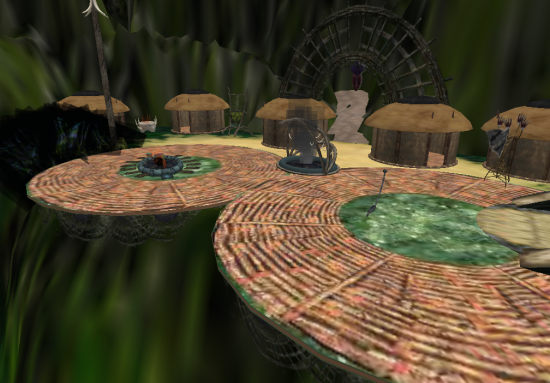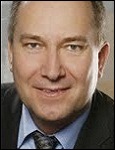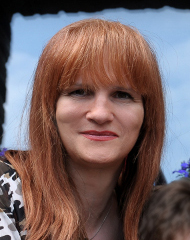AviWorlds, a commercial social grid, will be going down on Wednesday as it switches from managed hosting by Dreamland Metaverse to running its own servers.

AviWorlds has outgrown the management tools available from Dreamland Metaverse, Â grid owner Alexsandro Pomposelli told Hypergrid Business.Â
The Dreamland Metaverse management panel offers some options, including shutting down regions, upload region backup OAR files and saving backups, restarting regions, and other functionality. Other issues, such as changing a region name or adding new regions require a support request.
By moving the management in-house, AviWorlds will be taking care of those issues itself.
“Dreamland Metaverse is great for a startup and mini-grids,” said Pomposelli. “But as my experience grows with administering a commercial grid, I realize more and more that we need more freedom.”
Self-management will also allow AviWorlds to create new functionality for its users, he added.
“We are going to change the website with lots more features, like Second Life,” he said. “And our servers will have more processing power, which is needed due to the traffic in Aviworlds.”

Pomposelli said that the move may also result in some cost savings, but that this isn’t the primary motivation.
He added that Dreamland Metaverse has been “very helpful” in this process and will be providing AviWorlds will all the materials they need to make the move to their own servers, including the grid databases and archives.
No ‘lock-in’ philosophy
“It is our philosophy to never lock in customers,” Dreamland Metaverse CEO Dierk Brunner told Hypergrid Business.
He said the company is happy to provide AviWorlds with the datatabases and OAR files needed to migrate the entire grid to new servers.

“They are free to move to another hosting solution or try to OpenSim themselves whenever they like,” he said. “I am happy when our customers have found the best solution for them. For some, a self-hosted OpenSim grid really is the best solution.”
In practice, however, many customers who leave to run their own grids often wind up coming back, he added.
“They need to spend so much time doing things that are included in our service packages,” he said, that any cost savings from switching to self-managed servers quickly evaporate in increased staffing costs. “When users calculate in the time they need to spend for service management, software updates, support cases, and so on, they see how cheap our offer is.”
In addition, letting someone else run the technology leaves the grid management free for more important things, he says.
“They can focus on their community, the grid content, the marketing,” he said.
According to Brunner, Dreamland Metaverse can provide a new grid with everything needed to run a commercial world, including currency, land sales management groups, instant messaging, profiles, and community forums. Setting up a brand new grid typically takes two days, he said.
However, it can take time for customers to specify their exact requirements, such as their security needs, he added.
“That is what most often causes delays,” he said. “But in the end, the customer gets what he really wants.”
Rent-to-own grids
The “rent to own” model — also known as build-operate-transfer — is common in other types of outsourcing projects, such as outsourced call centers. The vendor builds the call center and runs it for the customer while the customer learns the operations. Ownership is transferred whenever the customer is ready.
Some customers decide to bring operations in house for control and security. Others decide that it’s easier and more cost effective to stick with the vendor, since they specialize in that particular service.
In the OpenSim world, Dreamland Metaverse is not alone in being supportive of customers who decide to run their own grids.
3D Hosting is familiar with the process of deliberately setting up a new grid for a customer, knowing that they will eventually leave and run it by themselves.

“Where we set up a grid for a customer using their own servers, we do get a certain feeling of satisfaction and a job well done when they
take flight and can stand on their own,” said OpenSim core developer Melanie Thielker, who is the CEO of 3D Hosting and founder of the Avination grid. “In those cases, the intent was clear from the start so we don’t feel it as a loss.”
Like Dreamland Metaverse, 3D Hosting can provide all the infrastructure needed by a commercial OpenSim grid.
“When a customer decides to let us build and host his infrastructure and later wants to take over the operation themselves that is perfectly fine for us,” said Kai Ludwig, director of TalentRaspel Virtual Worlds Ltd. “It’s not losing a customer but fulfilling a customer’s needs.”

Plus, the relationship doesn’t necessary end when a customer moves to its own servers, Ludwig told Hypergrid Business.
“The customer may come back with some development or consulting requirements,” he said.
However, while vendors can easily hand over the grid databases, and region and inventory backups, there are some management tools that are proprietary.
“Not all features can be migrated to customer-supplied servers,” said Thielker. “Our white-label grid offerings are really not designed as a stepping stone into self management, but as a fully managed no-worries solution.”
Similarly, Dreamland’s easy-to-use management panel is an exclusive feature that the vendor offers to its customers — it doesn’t come with the grid export files. However, customers can opt to rent just the grid management services from Dreamland Metaverse, while hosting individual regions themselves.
- Kitely Mega Worlds on sale for $90 per month - July 19, 2024
- OpenSim regions up, actives down with summer heat - July 15, 2024
- People think AIs are conscious. What could this mean for bots in OpenSim? - July 12, 2024
